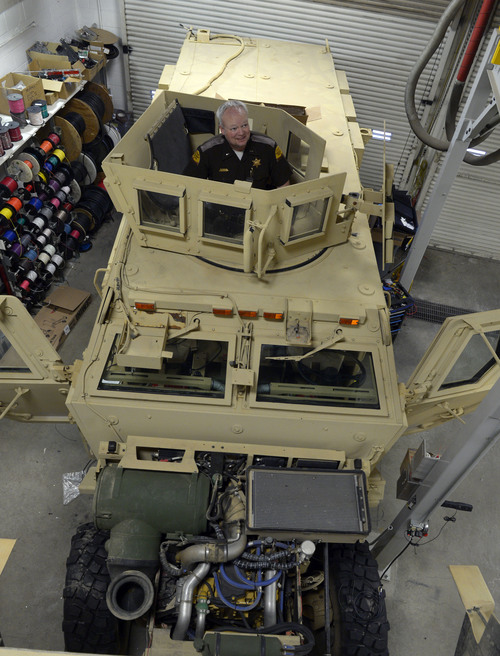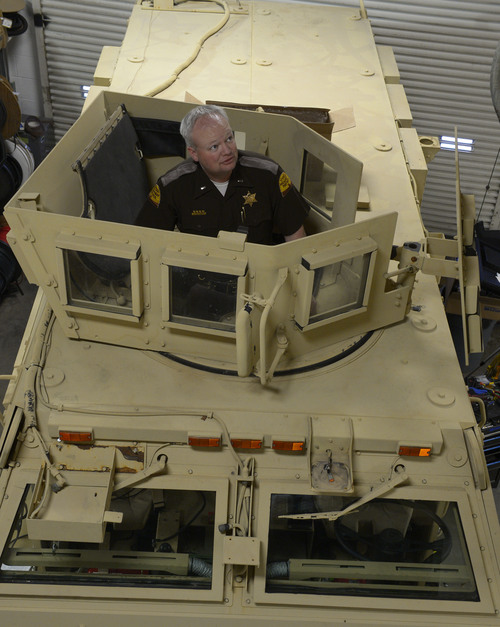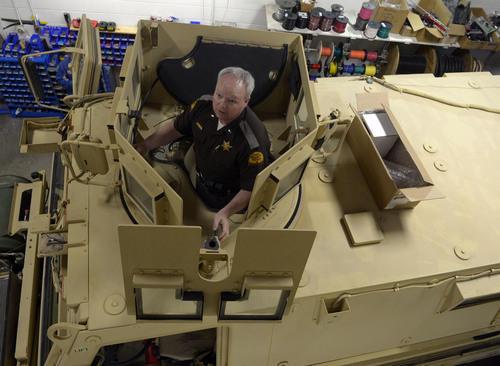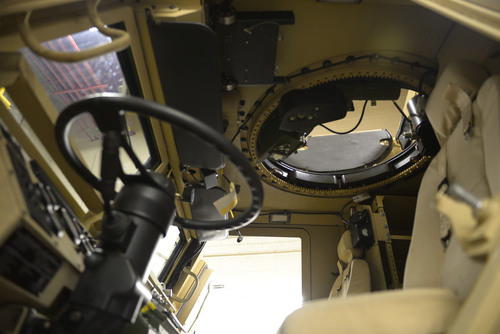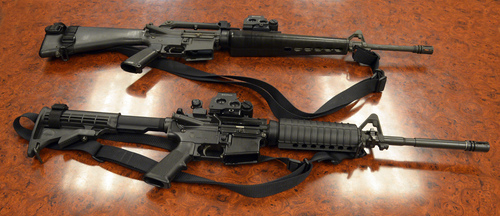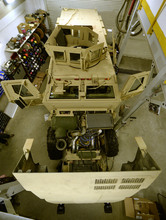This is an archived article that was published on sltrib.com in 2014, and information in the article may be outdated. It is provided only for personal research purposes and may not be reprinted.
New data show that the Utah state government — from the attorney general to the Utah Division of Wildlife Resources — has acquired a lot of surplus military weapons and gear.
The Utah Highway Patrol alone possess 250 M-14 rifles. There were 412 state troopers at the end of 2012, according to state data.
The Utah Division of Wildlife Resources has 84 M-14s, though the head of law enforcement for that agency said the DWR has been trying to return the rifles to the Department of Defense.
The DWR and state and local police forces acquired the weaponry and surplus gear through the 1033 Program. Congress started the program in 1996 to send surplus military gear to local police. Items like sleeping bags, backpacks and night vision goggles are given to the police forces while weapons are permanently loaned.
The 1033 Program has come under scrutiny since last month's protests in Ferguson, Mo., where police wearing, carrying and driving surplus military equipment pointed weapons and fired tear gas at protestors.
The Utah Legislature's Law Enforcement and Criminal Justice Interim Committee will discuss the program Wednesday with the state's commissioner of public safety and a representative of the American Civil Liberties Union.
The Defense Department provided data to The Tribune last year showing which gear it sent Utah police over a three-year period, but the Defense Department provided data only for weapons and vehicles on a county-wide basis. A rifle sent to the Sandy Police Department, for example, would appear in a spreadsheet column for Salt Lake County. Much of the gear sent to state agencies also appeared in Salt Lake County columns.
The public-records website Muckrock.com obtained the new data from the Utah Department of Administrative Services. An employee in that office acts as a state coordinator for the 1033 Program in Utah.
While much of the post-Ferguson focus on been on local police and the tools they use, the new data shows statewide agencies are big users of the 1033 Program.
Along with the UHP and DWR, the Utah Office of the Attorney General and the Motor Vehicle Enforcement Division both received rifles from the program.
The new data shows that five Utah police forces have received mine-resistant ambush-protected vehicles, called MRAPs for short. They are the Utah Highway Patrol, the Iron County Sheriff's Office, the Cedar City Police Department, the Brigham City Police Department and the Utah County Sheriff's Office. The Tribune reported on the UHP and Iron County MRAPs in January.
MRAPs were deployed during the Iraq war to carry troops and withstand roadside bomb attacks. They have heavy armor, and rifles can be deployed from a roof turret or through side panels.
The Iron County Sheriff's Office is located in Cedar City, meaning the 46,000 residents in the county have two MRAPs parked 2.7 miles from each other.
Cedar City police Sgt. Jimmy Roden on Wednesday said his department's MRAP is used by a multi-city SWAT team that does not include the sheriff. It can be driven to a scene and used to provide cover to retrieve a wounded or pinned-down officer.
"It would be primarily defensive type deployment," Roden said.
Roden said Cedar City has had the MRAP about six months. He is not aware that it has yet been deployed.
Tony Wood, chief of law enforcement at DWR, said he supervises 77 wildlife and conservation officers when fully staffed. DWR assigns rifles to the officers because they often work in remote locations with backup far away.
"Their safety is absolutely paramount," Wood said.
But the 84 M-14 rifles are sitting in a state armory. Wood says DWR has been trying to return them for about two years, but Defense Department has yet to accept their return.
Wood says the M-14s — which appeared to be manufactured in the 1950s — were too long for many of his officers to carry and fire. DWR replaced the M-14s with the shorter AR-15s.
Those rifles did not come through the 1033 Program. DWR bought them.
Wood says the equipment issued to a peace officer — and where it comes from — shouldn't influence how he or she interacts with the public. All officers, he said, should be taught and reminded they are public servants.
"If the nature of their equipment changes the way they interact with the public, they probably aren't the right person to have at our agency," Wood said.
Twitter: @natecarlisle


